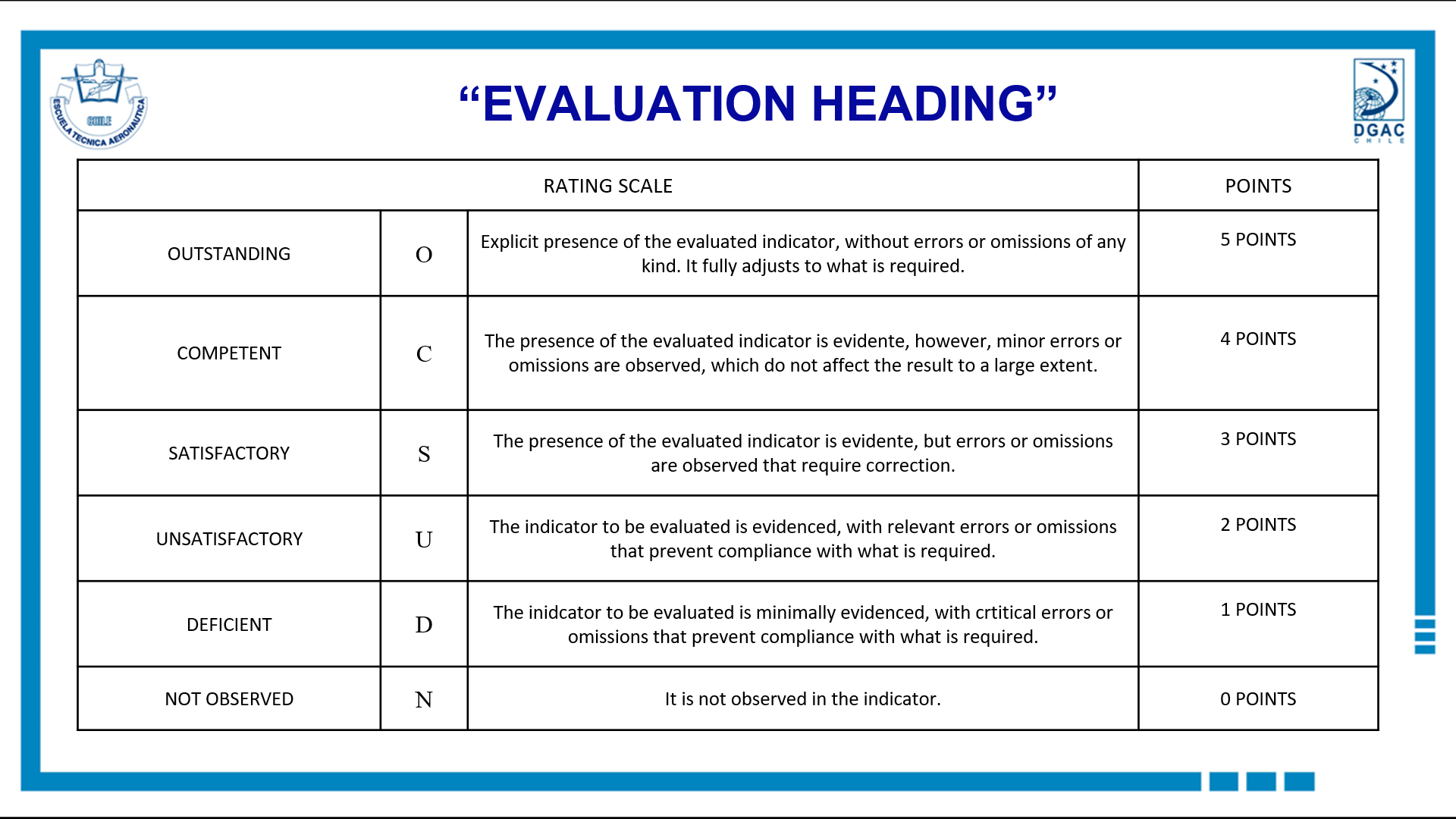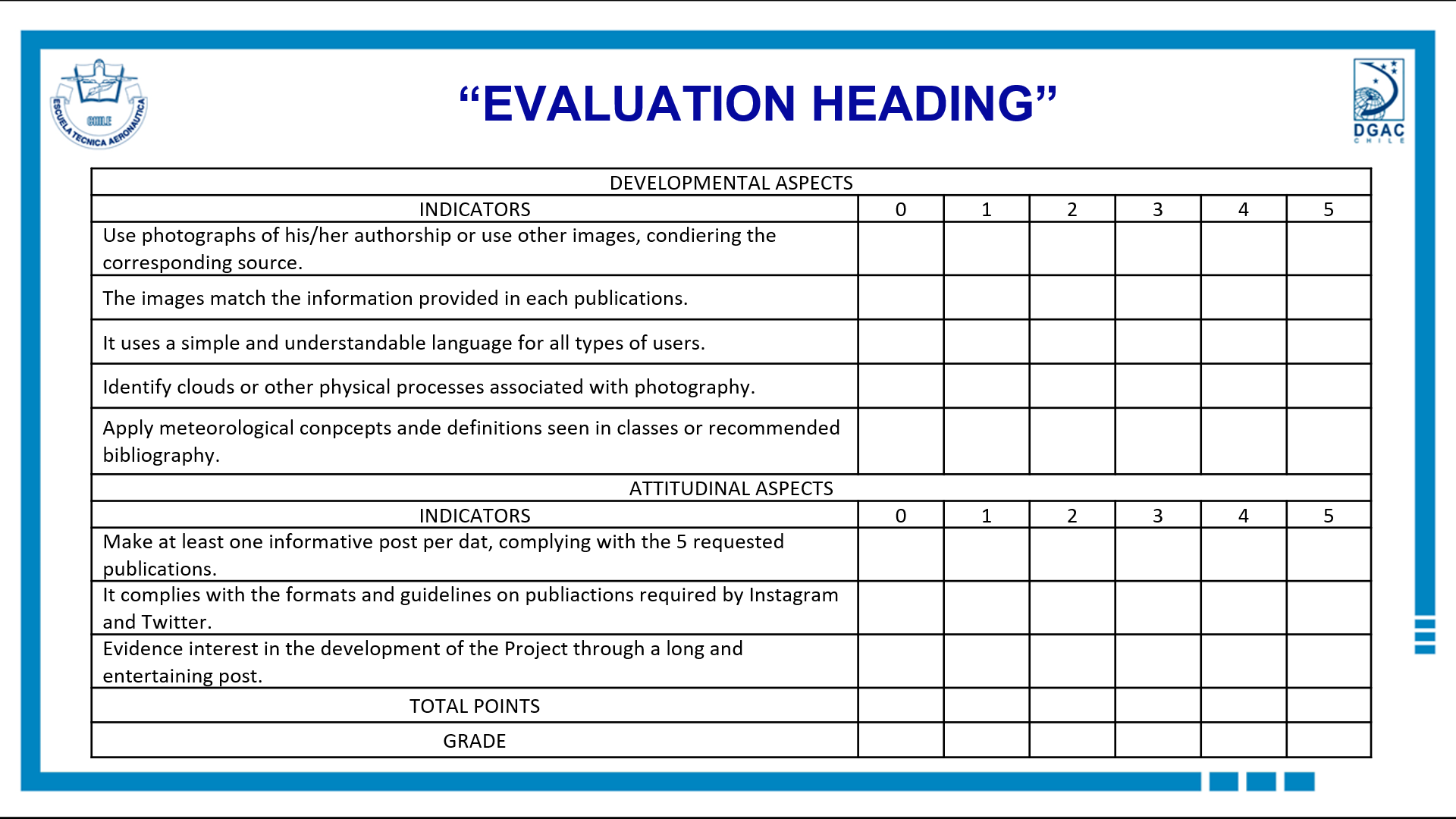Paola Uribe - Use of Social Media in the Learning of Meteorology Students
Authors: Paola Uribe Raibaudi1 y Maria Valentina Muñoz2
1: Dirección Meteorológica de Chile. 2: Escuela Técnica Aeronáutica
INTRODUCTION
A Professional Meteorologist, in the exercise of his/her functions, satisfies the needs of meteorological and climatological information, as a way of contributing to the economic development and the safety of population. In addition, it conducts relevent research in its field, to contribute to the development of meteorology as a science.
LEARNING SCOPE ASSOCIATED WITH
THE ACTIVITY
GENERAL PURPOSE OF THE ACTIVITY:
Link competences of the graduate profile, relating communication skills, digital use of information and atmospheric sciences
1. Communication skills associated with the Graduate Profile:
Communicational competences are understood as all those abilities that allow the specialist to provide the communicational knowledge and techniques to receive, process and deliver information under different communication channels (orally and in writing), so they can perform in a optimal and efficient way.
KNOWLEDGE; SKILLS; ATTITUDES
Conceptual: The student knows the communication techniques, orally and in writing, for the correct delivery of information regarding their field of specialty.
Procedural: The student processes data from its professional field from various sources, in its collection, integration, analysis and interpretation stages in order to transform it into grammatically correct oral and/or written reports.
Attitudinal: The student establishes communication with users and the media according to the responsibilities and functions that assist them based on fluency and relevance.
2. Skills in digital information processing
In a digital world, such as the current one, computer tools and the digital processing of information are fundamental tools in its orientation towards specialized work. Graduate student must be prepared and updated in the use of digital and computer tools to put them at the service of job requirements.
KNOWLEDGE; SKILLS; ATTITUDES
Conceptual: The student knows the theoretical-practical contents of technological tools for the integration of computer applications at the user level.
Procedural: The student uses technological tools to process and analyze information from the meteorological field, to optimize performance according to the requirements of the meteorological specialty.
Attitudinal: The student demostrates proactivity update in the use of technological tools for good profesional and work performance according to the requirements of the specialty.
3. Atmospheric science competencies
Meteorology is a science that is divided into large branches, with specific applications in its sphere of influence. It is necessary for the graduete to be competent in knowing and applying each of these branches since, ultimately, all contribute to the integral visión of the atmosphere.
KNOWLEDGE; SKILLS; ATTITUDES
Conceptual: The student understands the concepts of the basic branches of meteorology and their interelationships, in order to make inferences about the past, current and future state of the atmosphere, from a prospective perspective.
Procedural: The student applys the fundamental laws of meteology’s áreas to generate an objective conceotual model according to their work environment.
Attitudinal: The student maintains a criticak attitude towars each meteorological situation that arises, in order to be able to give an assertive diagnosis to find an adequate solution.
DESCRIPTION OF THE ACTIVITY
PURPOSE: Learn different meteorological concepts and communicate, in a simple way, complex technical aspects to any person.
GENERAL INDICATIONS:
2. In case of using other images, the student must detail the source.
3. Identify types of clouds or describe any meteorological phenomenon
4. Can be use a satellite images.
5. Use simple language that connects with the users.
EVALUATION HEADING


IMPLEMENTATION

The activity managed to reach 411 followers, with 106 publications between August and November 2020.

The students used surveys to engage with their followers.

And the students made their followers participate, through interactive questions.

They showed concern in answering each of their followers’ comments.
CONCLUSIONS
